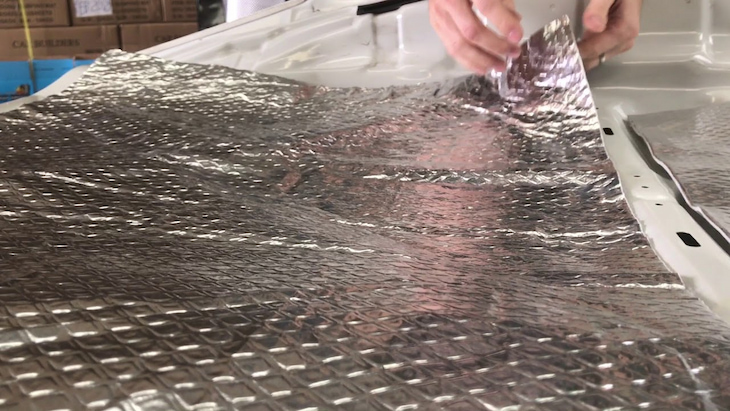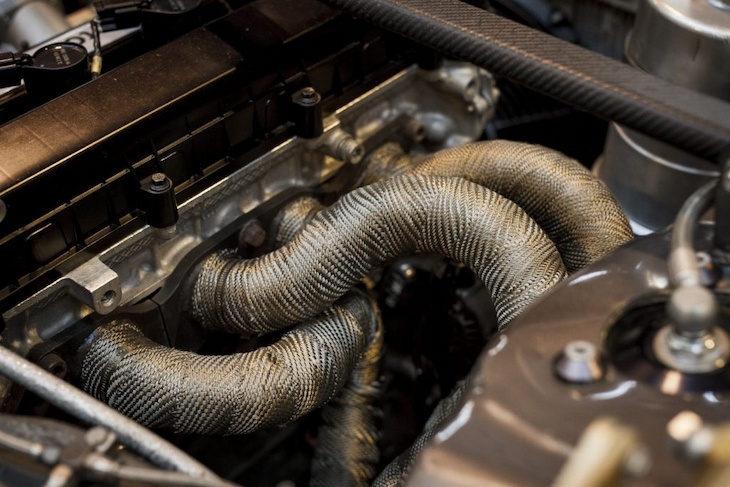Getting the most power out of your vehicle’s engine can be quite expensive, especially if you go the aftermarket exhaust route. Aftermarket exhausts are known to handle heat better, as they’re made using higher-quality materials, hence their high costs. However, if you don’t have the means to upgrade to a stainless steel exhaust, yet want to prevent heat build-up in order to get the best performance out of your engine and turbo, you should consider using a thermal heat shield or ceramic coating to help retain the heat in the downpipe and prevent heat from going inside the engine. Heat going inside the engine can result in overheating issues, which will ultimately make your engine wear down faster.

I’ve personally used a thermal heat shield on my downpipes to reduce engine bay temperatures, which led to the exhaust gases going faster. Moreover, I did get a significant drop in engine temperature, making it behave better than it used to. But I still ponder, was wrapping the downpipes with a heat shield tape over ceramic coating the better idea? I did my due diligence to see whether I made the right choice, and here’s what I found. But before I compare the two methods, let’s debunk some myths surrounding exhaust wrapping and its effects on performance.
Does Heat Wrapping Improve Performance?
Heat wrapping your downpipe won’t directly increase vehicle performance, as it’s not a performance part, and doesn’t improve the combustion process. However, it does keep temperatures down, allowing your engine to draw more cool, oxygen-rich air, resulting in more horsepower. Moreover, by retaining the heat inside the pipes, you get improved exhaust velocity, allowing gases to flow faster. This can especially be beneficial if you’re off-roading in the Australian summers, when the heat will melt steel beams, and when you drive over dusty terrain which is oxygen-deficient. And last but not least, by keeping heat out of the engine bay, you will extend the life and durability of the other parts inside the bay, as well as improve the efficiency of the coolers and radiators.
Heat Wrap vs Ceramic Coating
The thing is, you don’t have to choose one or the other. You can combine both for maximum heat retention. Ceramic coating excels in durability, especially considering it will be exposed to engine fluids. Heat wrap can degrade more easily when it gets in touch with corrosive liquids or oils. Ceramic coating also provides a more uniform look, if you want to keep the aesthetic under the bonnet. Moreover, it prevents rust and corrosion to the pipes. Heat wrap can cause expansion, and loosen over time, so you might have to re-wrap everything every once in a while.
That being said, ceramic coating may seem like a clear winner when comparing the two. Well, not quite – there are things you can do to prevent most of the downsides of heat wrapping.
Proper Installation and Regular Maintenance
Corrosion and moisture are two things heat wrap is prone to. The corrosion is typically formed by the trapped moisture inside the wrap, and it can cause exhaust leaks. However, with regular maintenance, these things can be prevented. Moreover, corrosion will not be an issue at all if the heat wrap is made of quality material, such as aluminium.

Expansion is caused by the heat itself, which can result in cracks or holes in the wrap. To prevent this, you can paint the downpipe with heat-resistant paint. While this can be costly, it provides heat-proof properties, making it worth it in the long run. Last but not least, you can add another layer of heat-resistant paint over the wrap to ensure no heat leaks.
It’s also important to wrap the exhaust as tight as possible. Due to the constant heating and cooling of the downpipe, the wrap can become loose and lose effectiveness. If the wrap is performed properly, it will be fine for longer. For this reason, you should apply the wrap at an angle, and slightly overwrap each concurrent layer by at least 30% to ensure a snug wrap.
To Conclude
Heat wrapping and ceramic coating your downpipes can be quite beneficial for the performance and longevity of your engine and exhaust system. You’ll definitely notice the effects it has on the temperature, especially when driving in the hellish Australian summer heat. You don’t have to choose between heat wrapping and ceramic coating, as you can combine both for the best effects. Both solutions are quite affordable, and they can go a long way in protecting your engine.
However, it’s important to apply heat wrap properly and maintain it for the best effects. You have to make sure you wrap the heat shield properly, and you can add heat-resistant paint under and over the wrap to ensure zero heat leakage.


















